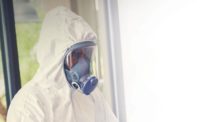It’s unfortunate when organizations get stuck in the past and only focus on lagging indicators. Lagging indicators are simply rates of injuries that have already happened. If we know how and why these incidents occurred, we can transfer this knowledge into our continual hazard analysis, improve our hazard controls, communicate them and begin to validate their use.
With this, we can work toward continually improving safe behaviors and conditions instead of arguing and pontificating over lagging indicators.
I’ve seen many organizations stuck in the rut of trying to make lagging indicators look better by arguing about incident culpability or recordability, all the while without a safety management program to show due diligence in hazard control. I’ve seen organizations try to improve safety by only following up on specific incidents -- as if preventing repeats of those exact scenarios will allow for safe behaviors and conditions without ever identifying, assessing and control hazards.
Safety cannot be reverse engineered. It has to be a proactive effort stemming from the organization’s leadership and integrated into the whole team’s processes and culture. Otherwise, trying to change a safety culture is just like trying to pass a test without studying; we have to put in the hard work up front to make positive results. It can’t be done after the fact.
No safety management = No validity or reliability
Many organizations track lagging indicators in safety to supposedly determine progress. They set targets for their recordable rates, DART rates or other indicators and then report them on a recurring basis, often using spreadsheets and colorful boxes to illustrate ‘good’ and ‘bad’ rates
However, many organizations will not, even while tracking lagging indicators, have a definite safety management process. Ultimately, without a complete package - hazard analysis, hazard controls, a communication program, leading indicators to validate hazard control use and target unsafe behaviors and conditions, lagging indicators to track progress after validating hazard control use and investigations to follow up on incidents and ensure preventative and corrective measures – trying to affect lagging indicators is like trying to pass a test without ever studying.
I’ve seen many organizations pontificate and argue about why their incident rates are what they are -- but without even having analyzed hazards or implemented hazard controls. I’ve seen organizations argue about why employees were injured but without having ever trained those employees on hazard control use. I’ve seen some organizations argue about why employees were working unsafely without ever having implemented a hazard control for the process that injured the employees.
Ultimately, without a safety management program, even talking about lagging indicators is a moot point. Like trying to pass a test without making an effort in class or studying, trying to affect incident rates without a safety management program is a lost cause. Plus, should a question of the organization’s diligence come up (as in a deposition or otherwise uncomfortable situation), it’s almost impossible to defend a bad lagging indicator without a safety management program to show an effort. Again, safety cannot be reverse engineered.
Investigations are only a part of the program
I’ve had some organizations with heightened incident rates ask me for recommendations on how to improve their safety culture. After conferring with them on the need for a hazard analysis, hazard controls, an information program, leading indicators, lagging indicators and investigations, several of these organizations have attempted to forego a full-circle program and simply investigate the most recent incidents that occurred within their organization.
In short, instead of trying to truly understand safety by thoroughly identifying, assessing and controlling the hazards in their processes, these organizations were attempting to only identify and correct single unsafe conditions or behaviors – after the incident had occurred.
For example, if an employee was injured by not using a hazard control, their intended course of action was to call that employee into a meeting and write up a performance improvement plan. While this is a valid course of action as part of a safety management plan (when applicable), my recommendation to them was to determine what the employee was doing, what hazard control was needed, how to communicate that hazard control expectation to the team and how to validate that all employees are using that hazard control. This, in turn, would allow for safe behaviors and conditions across the whole team instead of simply calling out one employee and hoping that one employee wouldn’t repeat the behavior that he or she was injured while doing, all the while the other employees are still possibly working unsafely.
This is exactly like trying to pass an exam on the second try while only studying the missed questions. This doesn’t provide an understanding of the whole situation; it only allows for a few specific examples. Plus, there’s a significant, if not absolute chance that the next incident will be totally different than the last. By only investigating specific incidents, in a best-case scenario, this prevents a few specific incidents from being repeated. It does not, however, create continual improvement in hazard identification, assessment and control. One more time: safety cannot be reverse engineered.







.jpg?t=1721257160)

